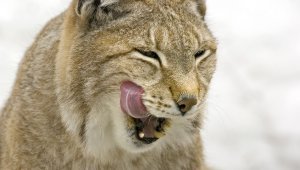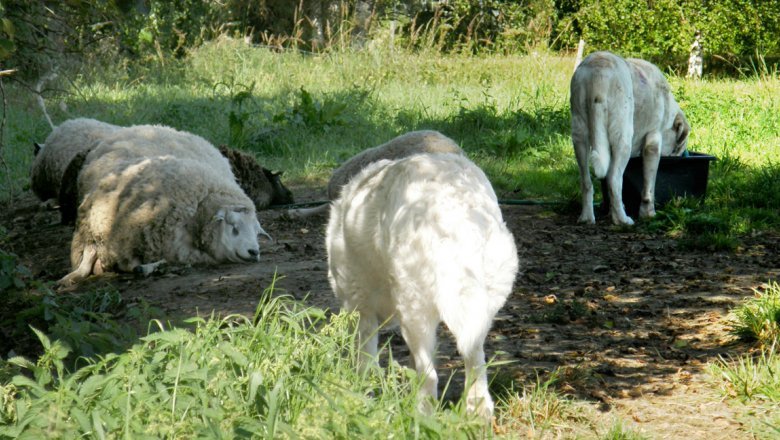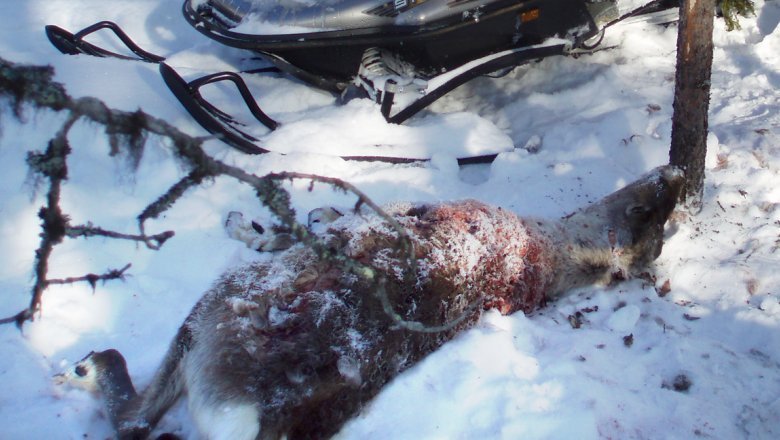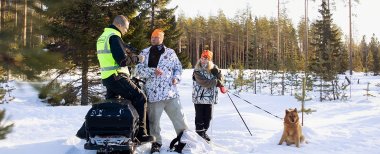Large carnivores and reindeer herding
The relationship between large carnivores and reindeer herding has never been without problems. Large carnivores prey on reindeer and cause financial losses to reindeer owners. Even though the state compensates the owners for all found reindeer carcasses, many reindeer killed by predators are never found. To account for this, the compensation for a found reindeer is paid with a multiplier of 1.5. Additionally, reindeer owners are compensated for calf losses for the time period between calving season and the last day of November based on computational models, and those reindeer herding districts that suffer repeated losses are compensated with a multiplier of 2. Despite these compensation systems, the viability of reindeer herding as a livelihood might still be in jeopardy in areas with strong carnivore populations. Read more about large carnivors and reindeer herding.
Damages to dogs
When a dog is harmed by a large carnivore, it is usually the work of wolves, but there are also cases where a dog has been lost to a lynx or a bear. Wolves attacking and killing dogs is one of the most significant problems in the relationship between humans and wolves on the local level (Finnish Ministry of Agriculture and Forestry 11/2005, Wolf population management plan). Read more about damages to dogs.
Damages to other domestic animals
If large carnivores manage to get up close to domestic animals without being seen by humans, the animals make for very easy prey. These types of attacks usually happen in pastures, but wolves and lynxes have killed domestic animals even inside cow and sheep sheds. In terms of numbers, the most common targets are sheep, which are preyed on by all of our large predators if they get the chance. In addition to sheep, wolves also kill cattle. Damages are reported on cattle of all sizes from calves to bulls. Wolves have also killed goats. Read more about damages to other domestic animals.
Damage prevention
Occasionally large carnivores cause damages to domestic animals. Livestock and hunting dogs are the most common targets. However, a significant portion of large carnivore damages may be avoided with the right kind of preventive measures. Read more about damage prevention.
Compensation for damages
Large carnivores may cause financial damages by preying on and killing domestic animals or by damaging farm buildings, equipment or bee yards. Read more about compensation for damages.
Types of large carnivore damages:
Personal injuries include injuries or harm to humans, diseases spread to humans and human fatalities caused by large carnivores.
Crop damages are defined as damages to fields, gardens, tree nurseries and their harvests caused by large carnivores.
Animal damages include damages caused by large carnivores to domestic or farmed animals, honey crops and fences, buildings and other such structures used for animal husbandry.
Property damages are damages caused by large carnivores to other inanimate property not specified in the other sections.
Reindeer damages are damages caused to reindeer by large carnivores.



